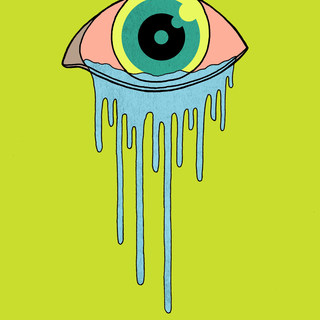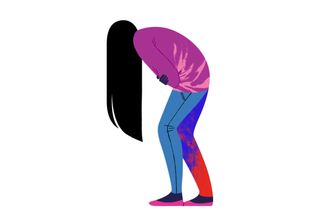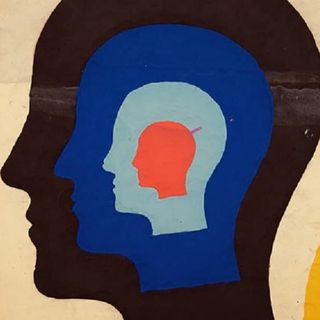
Women With Endometriosis Turning to Alternative Therapies for Relief
Acupuncture, yoga, Ayurveda, anyone?

Vasudha Rai has been suffering from grade IV endometriosis since 2006. Endometriosis occurs when the tissue that makes up the uterine lining grows outside the uterus and onto other organs in the body.
Several surgeries (including a full hysterectomy) and six months of relief later, she realized that her endometriosis had grown back. “I was in pain again, the same sort of pain for which I required surgeries,” she wrote in an Instagram post.
This time, the uterine tissue had grown on her colon. But the doctor advised her against a surgery. “If I went for one more, things would have become complicated, the doctor told me,” she says. “I knew I had to look for alternative treatments.”
Endometriosis, which affects roughly 25 million Indian women, is characterized by pain — chronic pelvic pain, pain before and during periods, and pain during sex. Depending on its severity, it can also cause heavy or irregular bleeding, miscarriage, and infertility. Current treatments include hormone therapy to regulate the hormones thought to encourage the excess tissue growth, and surgery to remove the excess growth. However, these treatments aren’t always effective. For instance, there’s no guarantee that after surgery the uterine tissue won’t spread over other organs again, as it did for Rai.
Moreover, these treatments are invasive and can cause side effects like depressive disorders, weight gain, muscle and bone changes, hair thinning and digestive problems, leaving many women feeling between a rock and a hard place.
“Pain relapses are possible, and in some cases, [hormone therapies] even cause menopausal disorders,” says gynecologist Dr Sabha Mhatre, from Mumbai’s Mhatre Maternity Home.
Related on The Swaddle:
Some Doctors See Pain As Just A Symptom of Being Female
Out of allopathic options, Rai decided to try acupuncture to manage her endometriosis. “After the first session, the heaviness from my pelvis was gone,” she says. “In three sessions the pain reduced by 90 percent. In a month, I feel normal again. For me, it has been a boon.”
Others like her are resorting to alternative therapies, including Ayurveda and yoga, as well as acupuncture, to fill the gap where medicine has failed.
However, Rai says a combination of conventional and alternative therapies that has helped her most. “I do have to take mild steroids and vitamins along with acupuncture and Ayurveda to keep things in place,” she says. “[Acupuncture] has shown the quickest results. During my treatment I fall asleep and wake up feeling calmer and lighter. I will keep doing acupuncture all my life.”
Studies suggest acupuncture can yield better reduction in pain than normal treatments, and Dr Mhatre agrees it’s worth a try. “It seems to alleviate pain because it increases pain thresholds in humans,” she says.
If that doesn’t work, gynecologist Dr Sushma Tomar from Mumbai’s Fortis Hospital says, “yoga helps reduce symptoms and improves blood flow. It relieves one from menstrual pain, regulates hormonal imbalances that eases pain.”
For Mumbai-based Priya Popat, who has been suffering from endometriosis for a decade and who, like Rai, has been in and out of surgeries, yoga has been the thing to help her manage pain at last. She says, “although there’s no research to suggest that yoga is the cure for endometriosis, me, along with a few other patients, can swear that it has helped us alleviate pain.”
One of her favourite poses is Balasana, or the child’s pose. “It opens my back and hips and helps me with migraines. It gives me relief from cramps, soothes anxiety and releases tension. It has also helped me when I’m feeling fatigued or dizzy,” she says. “In 10 years of suffering from endometriosis, it is only in the past year [doing yoga] that I’m finally feeling fine.”
Her instructor Damini Pant explains that yoga helps some people with endometriosis because the poses stretch abdominal and pelvic muscles in a way that can relieve pain. However, she notes, yoga isn’t a cure for endometriosis; rather, it’s a complement to other, conventional forms of medical treatment.
Related on The Swaddle:
Men and Women Remember Physical Pain Very Differently
Still other women are finding endometriosis relief in Ayurveda. Ayurvedic treatments aim to lessen the accumulation of toxins in the body, which the practice holds responsible for chronic diseases like endometriosis, explains Dr Kamal Pradhan, an Ayurvedic doctor based out of Mumbai.
Ayurvedic detox has helped Arti Jairamesh, an endometriosis patient for the last four years. “The frequent Ayurvedic oil massages and body treatments along with a diet of broths and light porridges in my daily diet helped me reduce the pain by at least 70 percent,” she says. “In Ayurveda, the extraordinarily painful bloating is taken care of.”
Dealing with endometriosis is a long-term process with no cure, neither conventional nor alternative, and no guarantees; different therapies for pain management suit different people. “If exercises are not adapted to suit you and your condition, they may aggravate rather than ease your symptoms,” says Dr Pradhan.
Which suggests that ultimately, perhaps, the biggest benefit of acupuncture, Ayurveda, yoga, herbal medicines, massages and diet changes and more, for endometriosis patients is that they allow women to participate in their own therapy.
Anubhuti Matta is an associate editor with The Swaddle. When not at work, she's busy pursuing kathak, reading books on and by women in the Middle East or making dresses out of Indian prints.
Related


Do Audio Drugs Really Get You High?
